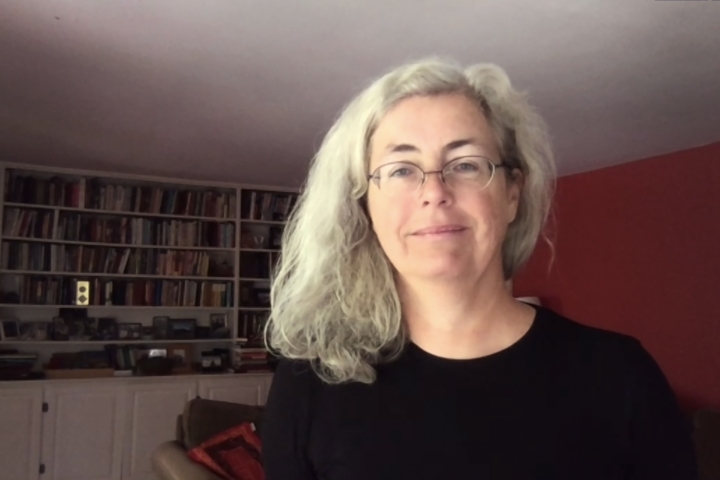A proposal led by Professor of Physics and Astronomy Kristina Lynch to study the processes that contribute to auroras is among five proposals recently chosen by NASA for possible space environment missions. The five possible projects will each receive $1.25 million to support a nine-month concept study report, after which NASA will select as many as two to launch as $250 million multiyear space missions.
If chosen, Lynch’s Auroral Reconstruction CubeSwarm (ARCS) would use small, cube-shaped satellites to take to the next level work she has been doing for more than a decade—using rockets to study aurora, also known as northern and southern lights.
“Dartmouth is an important step closer to leading a new mission to space, using cutting-edge ‘cubesat’ nanosatellite technology and building on decades of expertise in rocket science,” says Dean Madden, vice provost for research. “Professor Lynch’s project will explore longstanding mysteries of the northern lights, which serve as real-time sensors of the invisible solar wind that constantly buffets our planet.”
“It’s a big deal, at least within my research community,” says Lynch, principal investigator for the project. “We’re not there yet, but it’s a nice vote of confidence.”
The prospective missions would provide a clearer understanding of the dynamics of the Sun and the constantly changing space environment around Earth with which it interacts, NASA said in a news release. In turn, that knowledge would improve understanding about the universe and “help protect astronauts, satellites, and communications signals—such as GPS—in space,” NASA said.
Lynch’s multi-institutional team would put into orbit a “swarm” of 32 mini satellites that would measure electricity and magnetism as they pass over the northern and southern auroral lights. The small rectangular spacecraft would transmit the data to the ground to be combined with data from 32 small ground-based observatories spread across Alaska.
Due to the intense effort required to create a spacecraft, most spacecraft studies make observations and measurements from a single point, Lynch said.
Her previous and ongoing research work includes launches of small NASA rockets designed to separate into five parts and then disperse, providing data about a few different parts of an aurora, she said. But with its much broader reach across time and space, ARCS would enable her to explore intermediate-size sections of aurora, features of the colorful whirling light shows that have rarely been studied.
The resulting data—crucial to understanding the physics at the border between Earth’s atmosphere and space—would provide insight into the entire magnetospheric system surrounding Earth, Lynch said in her proposal.
Aurora are indicators of activity in the near-Earth space, so “when things are relatively quiet, the auroral oval around the pole is kind of quiescent and small,” she says. “When there is a lot of aurora, there’s a lot of electromagnetic energy, a lot of input from the Sun.”
The concept study for ARCS will include a risk assessment, engineering, and cost analyses, which Lynch and her team will use to “close the loop” and confirm that the mission will be able to garner the scientific results described in her proposal, she says. “That’s my job, which is fun in and of itself.”
And while it’s outside the scope of her project, Lynch trusts her observations might prove useful to planetary scientists.
“Jupiter has aurora. Saturn has aurora. Uranus has aurora. Some of the moons have aurora,” she says. “So getting a better understanding of what the visible aurora tells you about the space environment is, for me, one of the motivating factors.”
Lynch’s science team includes, among others, researchers from Johns Hopkins University, the University of Alaska, and the Space Science Center at the University of New Hampshire, where she worked before joining Dartmouth. If selected, the ARCS project would be managed by Southwest Research Institute, which has an office at UNH; the science team direction would be led by Dartmouth.
Lynch and her team worked for more than two years to ready her proposal, receiving assistance from Dartmouth, UNH, the Johns Hopkins University Applied Physics Laboratory, and New Hampshire’s Established Program to Stimulate Competitive Research (EPSCoR).
“There’s been a lot of New Hampshire support for getting it to this point, so we trust that we bring something back to the state,” Lynch says. “A lot of the engineering and management will be based at UNH, and a lot of the science will be based at Dartmouth, so it will be a big project. And it will be fun, too.”
Aimee Minbiole can be reached at aimee.minbiole@dartmouth.edu.
